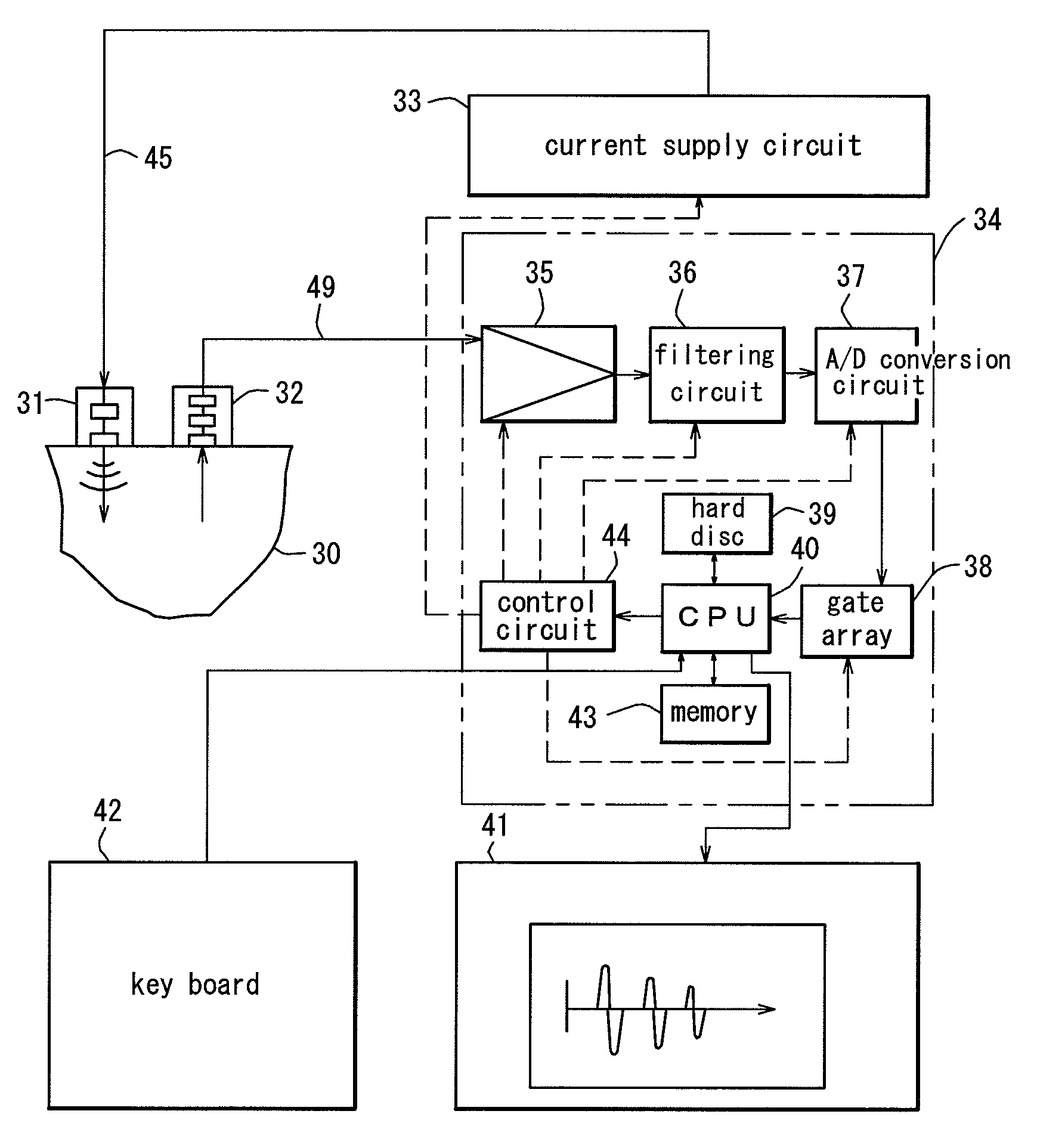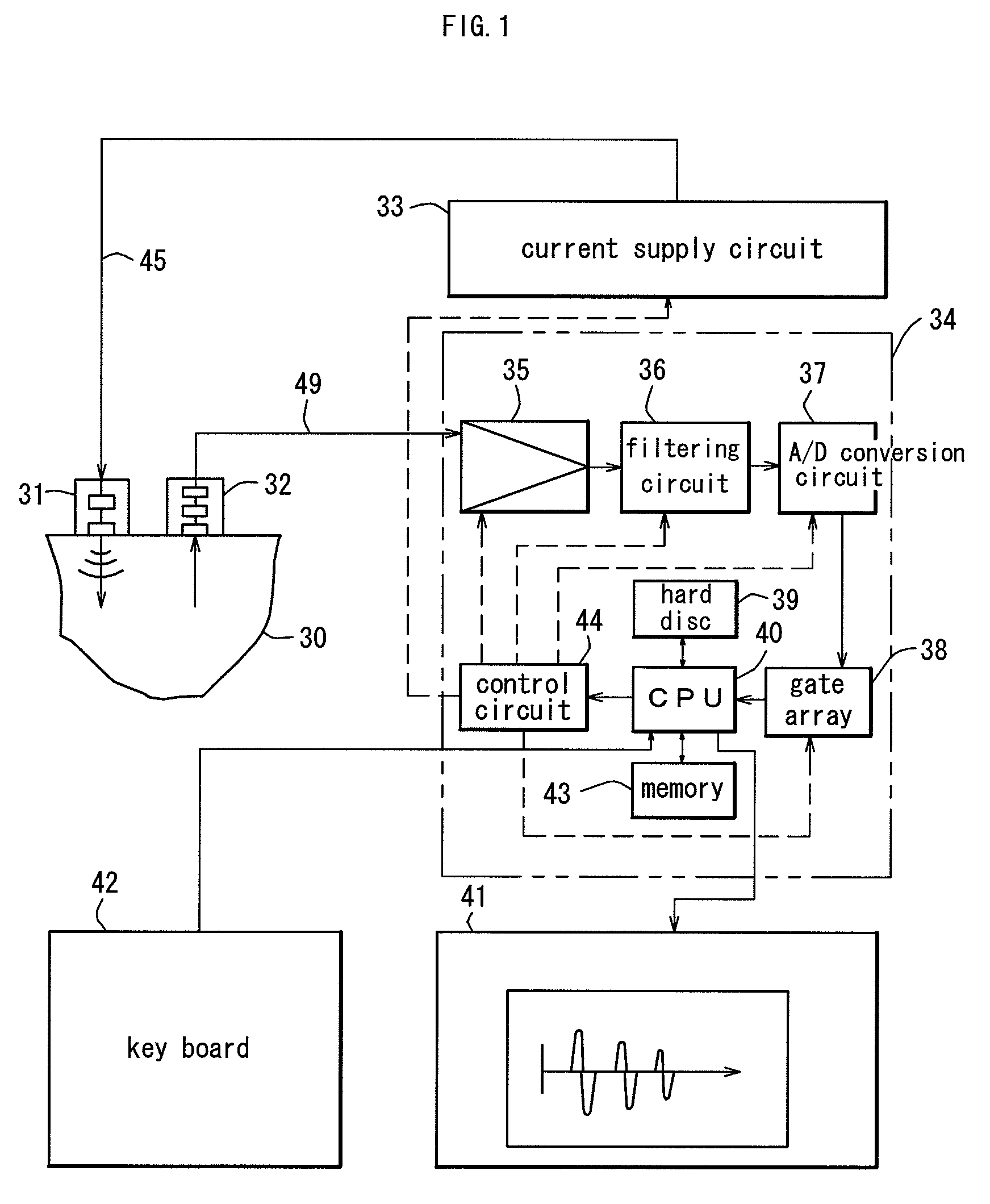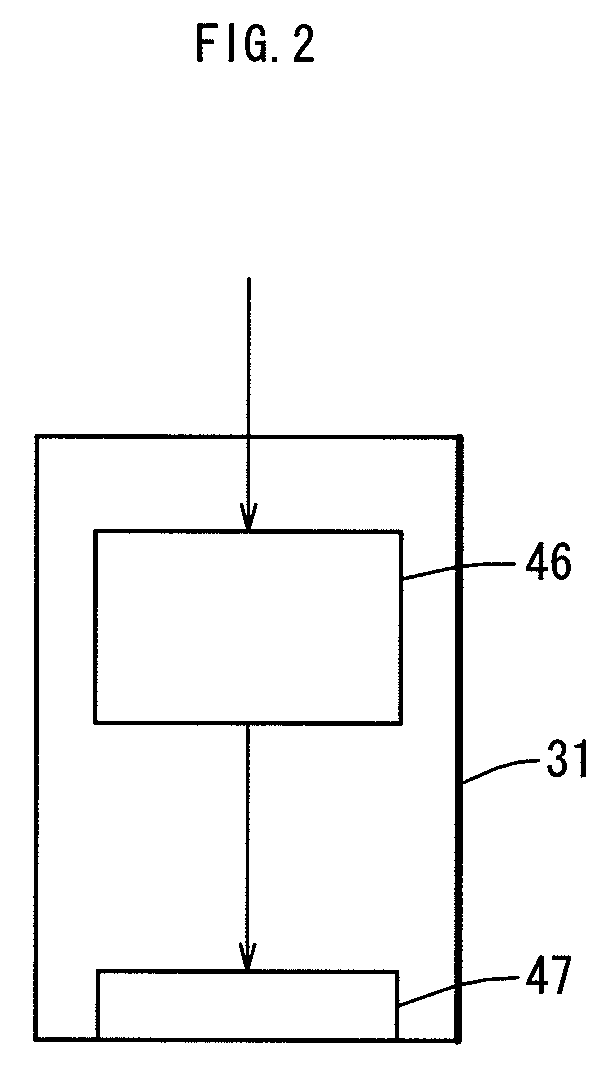Ultrasonic probing method and apparatus therefor utilizing resonance phenomenon
a resonance phenomenon and ultrasonic probe technology, applied in the direction of instruments, specific gravity measurement, processing detected response signals, etc., can solve the problems of large number of measurement steps, individual differences in size, and relative difficulty in probing a flaw in a probe target formed of a material having a large scattering attenuation, so as to improve the accuracy of probing and large scattering attenuation
- Summary
- Abstract
- Description
- Claims
- Application Information
AI Technical Summary
Benefits of technology
Problems solved by technology
Method used
Image
Examples
example 1
[0207]With reference to FIG. 6 through FIG. 17, Example 1 in which a longitudinal 12th-order resonant spectrum of nB·f1 frequency=1420 kHz is sampled out and the component wave is compared at measurement points will be described.
[0208]FIG. 6 shows a measurement model of the probing target 30. The measurement model has a planar size of length X=120 mm and width Y=120 mm, and a thickness W=25 mm, and is formed of stainless steel. A line-like flaw Z is made as shown in the figure.
[0209]The transmission probe 31 and the receiving probe 32 respectively including the vibrators 47 and 52 (see FIG. 2 and FIG. 4) each having a diameter of 15 mmφ are located, such that the distance “a” between the centers of the probes 31 and 32 is fixed at 90 mm and a line segment connecting the probes 31 and 32 is perpendicular to the flaw Z. The line segment is translated by an interval of a moving amount ΔX=9 mm. Thus, a multi-point measurement, by which a plurality of received waves Gj(t) are measured an...
example 2
[0248]With reference to FIG. 18 through FIG. 26, Example 2 in which a transverse 8th-order resonant spectrum of nB·f1 frequency=664 kHz is sampled out and the component wave is compared at measurement points will be described.
[0249]FIG. 18 shows a measurement model of the probing target 30. The measurement model has a planar size of length X=300 mm and width Y=400 mm, and a thickness W=20 mm, and is formed of stainless steel. A line-like flaw Z is made as shown in the figure. The width of the flaw Z is ε1=18 mm.
[0250]The transmission probe 31 including the vibrator 47 (see FIG. 2) having a diameter of 15 mmφ is located at a fixed position. A receiving probe 32 is located on a circumference having a constant radius R=160 mm and having the central point of the transmission probe 31 as the center. (The radius of the circumference corresponds to the distance “a” between the centers of the transmission probe 31 and the receiving probe 32.) The receiving probe 32 is moved in the circumfer...
example 3
[0284]With reference to FIG. 27 through FIG. 41, Example 3 in which a flaw is probed inside cast iron having an especially large scattering attenuation will be described.
[0285]In Example 1, the measurement is performed on a stainless steel probing target having a thickness W of 25 mm. A longitudinal 12th-order resonant spectrum of 1420 kHz (nB·fS1=12×118.4=1420 kHz) is sampled out by an arithmetic operation or band pass filtering, and the obtained component wave GAj(t) at measurement points is provided for a comparative display (see FIG. 14).
[0286]In Example 2, the measurement is performed on a stainless steel probing target having a thickness W of 20 mm. A transverse 8th-order resonant spectrum of 664 kHz (nB·fS1=8×83=664 kHz) is sampled out by an arithmetic operation or band pass filtering, and the obtained component wave GAj(t) at measurement points is provided for a comparative display. In both of Examples 1 and 2, analysis is performed in a relatively high frequency band.
[0287]...
PUM
| Property | Measurement | Unit |
|---|---|---|
| frequency | aaaaa | aaaaa |
| frequency | aaaaa | aaaaa |
| frequency | aaaaa | aaaaa |
Abstract
Description
Claims
Application Information
 Login to View More
Login to View More - R&D
- Intellectual Property
- Life Sciences
- Materials
- Tech Scout
- Unparalleled Data Quality
- Higher Quality Content
- 60% Fewer Hallucinations
Browse by: Latest US Patents, China's latest patents, Technical Efficacy Thesaurus, Application Domain, Technology Topic, Popular Technical Reports.
© 2025 PatSnap. All rights reserved.Legal|Privacy policy|Modern Slavery Act Transparency Statement|Sitemap|About US| Contact US: help@patsnap.com



